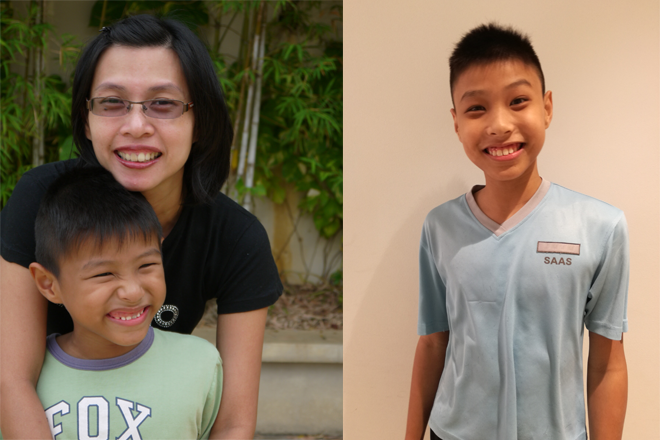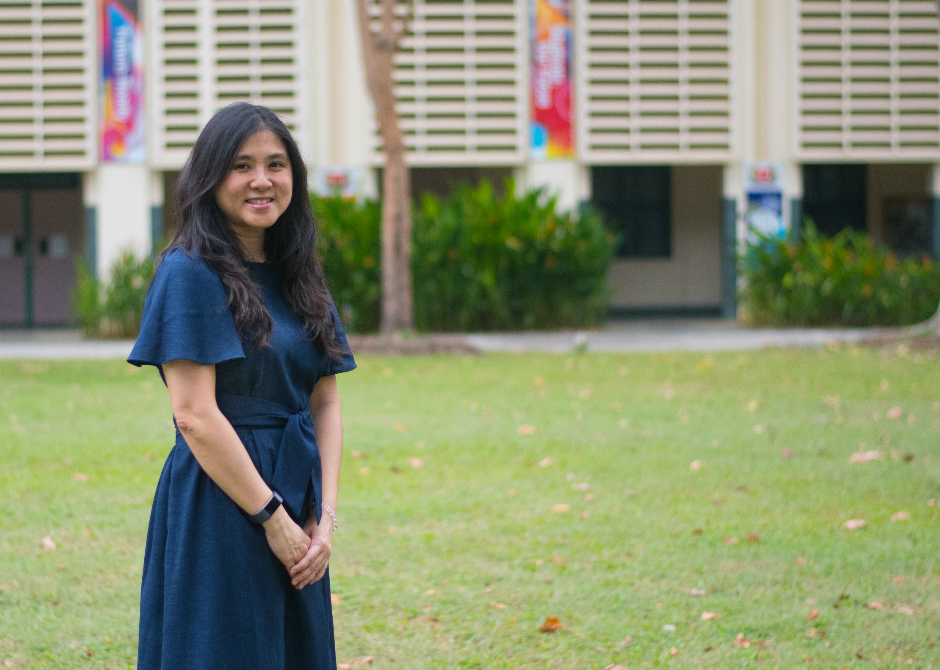Brenda Tan will never forget the moment when her older son was diagnosed with moderate autism. Calder was three, and had just gone for a two-hour psychological assessment.
She was dismayed but did not show it, until the next day when tears flowed as she bathed her younger daughter, Ethel, who was then six-months old.
“I was lost when I found out that Calder has autism,” shared the mother of two, who has since written two books about people with autism.
As a baby and toddler, Calder did not talk or respond to people and preferred to keep to himself. Brenda and her husband thought he was just indifferent.
It was only at a scheduled health check when he was 18-months old that Brenda realised something might be amiss. The paediatrician signalled to Calder to point out his nose. He didn’t respond despite several attempts.
A year later, Brenda brought Calder for further tests where his diagnosis of autism was confirmed. He had limited speech and social skills, craved repetition, was fearful of loud noises and experienced frequent meltdowns.
A decade after his diagnosis, 13-year-old Calder has improved with his parent’s nurturing and support from school. At seven, he called Brenda “mummy” for the first time and has gone on to learn how to read, write and communicate more.
The first step forward
Even though Brenda and her husband were still trying to come to terms with their son’s condition, they were determined to help him live life to the fullest.
“We started to look up early intervention programmes for Calder because we wanted to create an environment for our son where he could be free to realise his potential at a pace that he was most comfortable with,” she said.
This was when Brenda came across the Early Intervention Care for Infants and Children (EIPIC) programme at Autism Children’s Centre, now called Eden Children’s Centre.
Specifically aimed at helping infants and young children with special educational needs, the programme incorporates activities from daily life that will help improve their motor, communication, social, self-help and cognitive skills.
She believed it was the right programme for Calder and signed him up. After completing two years, she felt it was a natural progression for him to further his studies at Eden School.
The school prepares their children for the start of the school term by sending parents pictures of the teachers assigned to their children. This practice played a significant role in helping Calder cope with his new environment.
“The pictures helped me familiarise Calder to people who would be taking care of him in school so it made the transition for him that much easier,” noted Brenda.
To her surprise, Calder seemed to enjoy school so much that he also became a member of its in-line skating co-curriculum activity (CCA).
“I was very impressed because for a child who couldn’t follow verbal instructions well, he actually learned well enough to skate with ease and fearlessness,” she said.
Despite the good start, Calder began to have recurrent meltdowns. Brenda and her husband had to make a few trips to the school to calm him down and bring him home.
Due to the considerable distance between their home in Hougang and Eden School’s campus in Bukit Batok, getting to Calder in time proved to be an even more tedious task.
“When he was experiencing a few episodes of meltdown and refused to board the school bus for home, we realised then that he needed to move to a school nearer to home.”
Taking a leap of faith
While looking for an alternative, they found St Andrew’s Autism School at Marine Parade. Brenda and her husband brought Calder for a visit.
“We noticed his happy vibes right away. He seemed to enjoy the quiet and spacious environment that the school had to offer,” she said.
What appealed to Brenda was also the school’s Adult Autism Services programme. This provides students with a safety net if they cannot find employment in their adult lives.
“Of course, we wish for him to be able to find satisfying work in adulthood, but knowing there’s this other option gives us a certain amount of assurance,” she said.
Just like Eden School, St Andrew’s Autism School also helped ease Calder into his new environment. The teachers made home visits during the start of the school term, enabling them to find out more about the students from their caregivers while the children familiarised themselves with the teachers too.
“This way, rapport is established between parents and teachers, which eases communication for the rest of the school year,” she added.
Like most children with autism, Calder relies on a clear routine to structure his days more easily. Having a well-defined timetable of daily tasks allows him to anticipate events and activities and hence reduce unwanted stress and anxiety.
Given the huge changes that come with moving to a new school, Brenda had to ensure that her son was prepared for the transition. She started by including details of his new school in his daily timetable.
Brenda put up a schedule board that showed Calder’s main activities for every day of the week. Brenda would also familiarise him with what to expect, e.g. taking the school bus, then going to toilet etc.
“The timetable helped Calder understand that he’d be going to school from Monday to Friday. This level of predictability helped him to understand the new phase in his life that he was about to embark on,” she explained.
A change of environment
Even though Calder is unable to express himself fully, Brenda said there has been a marked improvement in his behaviour.
For one thing, he thoroughly enjoys the weekly outings when the school brings the students to nearby areas for them to experience daily activities like taking public transport, ordering food from the hawker centre and interacting with the public.
His teachers would also send photos and videos documenting Calder’s experiences, which he likes to see or watch.
“He likes to remember events this way. These pictures and videos help me guide Calder in his journal writing,” she said.
Calder became a member of the school’s cooking CCA, which has brought great joy to him.
“He always grins when I take out the food that he’s prepared at school and he’s always happy to read to me the accompanying recipe that he’s had to learn,” she shared.
Later, he joined the school’s swimming CCA, and received training for competition.
Choosing the right school
Brenda understands that picking the school can be stressful and difficult.
She suggests the following checklist:
- Does your child seem to like the place upon first or second visit?
- Are the teachers and school leaders approachable; is there is an open and easy communication between teachers and parents?
- Does this school show by its activities and proposed education plan that it believes the child can learn significantly?
At the end of the day, it is how your child feels. “For a child with autism, it all boils down to how he reacts at school. So far, he has not displayed any resistance going to this school,” she said.
Parents can check out the open house of special education schools to make an informed decision.





.png)
